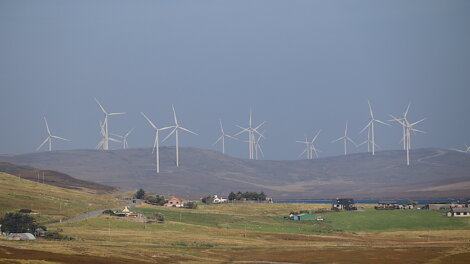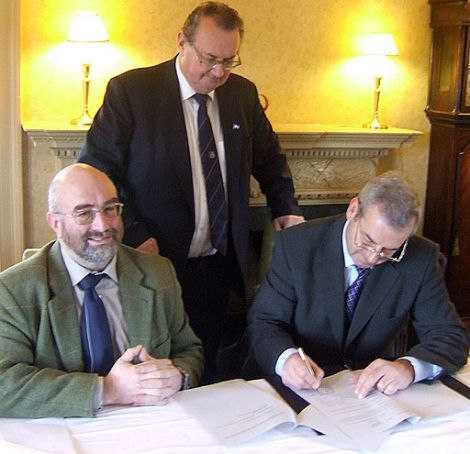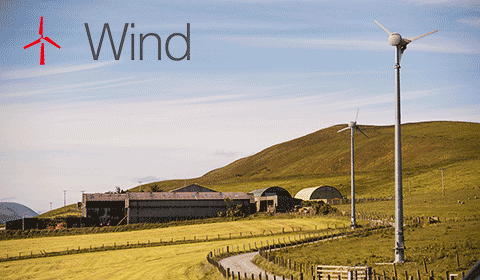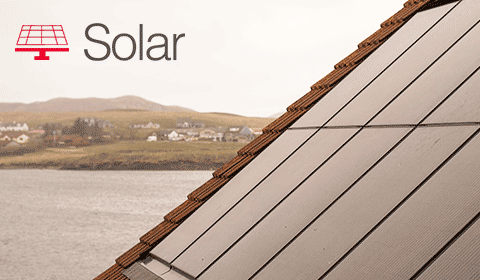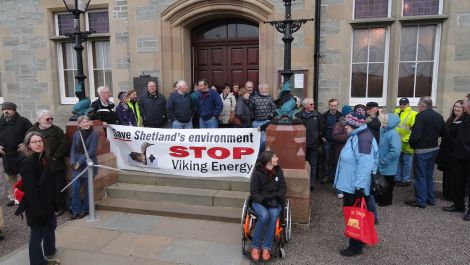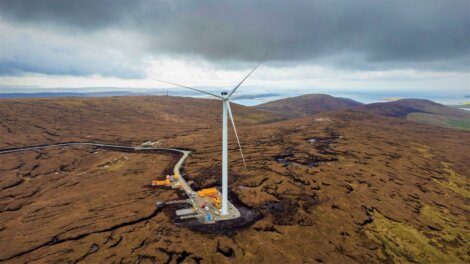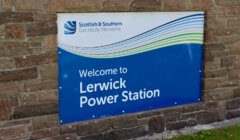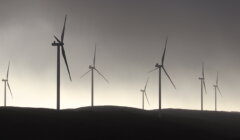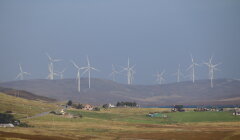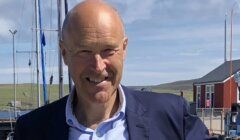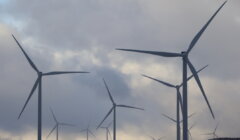Community / A short history of the Viking Energy wind farm project
FOR MORE than 20 years the debate over the pros and cons of the Viking Energy project has dominated public life in Shetland.
The completion of the £1.2 billion project (wind farm plus national grid connection) is reason for many in the renewables industry to be jubilant, while many in the community have been left with a sense of betrayal.
While SSE executives do not seem to understand where that bitterness and continued opposition to the 103-turbine wind farm comes from, it is worth ploughing through our own archive and compile a short Viking history in bullet points:
- 2003: In an attempt to embrace and benefit from the emerging renewables industry, Shetland Islands Council announces plans for a 300MW community-owned wind farm 12 miles north of Lerwick. Scottish and Southern Energy (SSE) also has plans for large wind farms in Shetland, one on Yell and one in the north mainland.
-
July 2005: Following a unanimous support from councillors the SIC and SSE sign a memorandum of understanding to jointly build a 600MW wind farm in the north mainland.
The project is designed to convince energy regulator Ofgem to commission the building of an interconnector that will connect Shetland to the national grid.
The driving force behind the move is the hope to replicate and build upon the economic benefits Shetland has enjoyed through its close relationship with the oil industry. -
January 2007: With a hefty nod towards the 1988 Busta House Agreement between the council and the oil industry, an agreement is signed at the same venue in which both partners – SIC and SSE – agree to build “the largest community owned wind farm in the world”. The estimated price tag for the project sits at £1 billion.
Supporters of the project say the isles could earn between £18 and £23 million from the project per annum.
Meanwhile, a first protest group against the project proposal, the Shetland Against Windpower Group (SAWG), is formed.
Become a member of Shetland News
-
March/April 2007: During a series of public meetings in village halls across the north and west mainland, the developers are confronted with growing opposition from those who will be living nearest to the proposed project.
The team behind Viking Energy – which is owned by SSE (50 per cent), SIC (45 per cent) and the Thomson family who own the Burradale wind farm – are accused of “arrogance” for leaving it so late to speak to islanders affected by the development.
More signs of opposition against the wind farm proposal emerge as a number of unsuccessful candidates at the May council election warn of the risks of the project, financially and environmentally.
While most people speaking out against the proposal insist they are not against the development of renewable energy projects, they are “horrified” by the size of the Viking project which originally consisted of 192 turbines. - September 2007: Shetland Charitable Trust buys the council’s share in Viking Energy for £900 and commits itself to investing in the project to bring it through the planning phase.At the time, a local authority could not legally be involved in a company that sells electricity.
- 2008: Campaign group Sustainable Shetland is formed. During a number of meetings in village halls, organised by the group, councillors are told “to come off the fence”. Emotions run high while fears are voiced that the project could open the doors for multinational energy companies to industrialise the isles to the detriment of local communities.
-
April 2008: Viking Energy responds to objections from the community and presents a revised project that cuts the number of proposed wind turbines from 168 to 154.
The results of a consultation undertaken by Viking Energy shows that support for the project narrowly outweighs objections. -
May 2009: The Viking Energy partnership submits an application for consent under section 36 of the Electricity Act 1989 for a 540MW wind farm to the Energy Consent Unit.
Energy projects above 50MW are not decided by the local authority but by Scottish ministers. The SIC becomes a statutory consultee in the planning process. -
September/October 2009: Around 600 people attend four public meetings in Aith, Brae, Lerwick and Dunrossness to help inform the SIC in deciding whether or not to support the planning application.
An objection from the local authority would automatically trigger a public inquiry. -
September 2010: In an amendment to its original planning application, Viking reduces the size of the proposed wind farm from 150 to 127 turbines with a generating capacity of 457MW.
Viking Energy Partnership chair Bill Manson said: “We have listened to what people have said and we have put a massive amount of time and effort into making changes to address concerns.” See: http://shet.news/z393a
Meanwhile plans for a 65MW wind farm on the island of Yell by German company Enertrag were announced.
Photo Shetland News
-
December 2010: Councillors go against the recommendations of the authority’s head of planning, Iain McDiarmid, who had advised elected members in a 69-page report to object to the proposed development as, in his professional view, it was contrary to the council’s own structure plan.
Instead, nine of Shetland’s 22 councillors gave their backing to the project with three councillors voting in favour of McDiarmid’s recommendation. One councillor abstained.
Seven councillors did not take part in the debate due to conflict of interest while two were away.
Full report here: http://shet.news/p51jt -
April 2012: Scottish ministers approve a scaled down Viking Energy project after 24 proposed turbines in Delting were removed following objections from the operators of Scatsta Airport. The project now consists of 103 turbines and has a generating capacity of 370MW.
The Energy Consents Unit received almost 4,000 representations including 2,772 objections.
Report here: https://shet.news/deoia - June 2012: In an appeal organised by the Wind Farm Supporters Group, around 140 local businesses urge Shetland Charitable Trust to continue investing into the development of the Viking project as “Shetland can’t afford to sit back and lose this opportunity”.
- December 2012: Sustainable Shetland goes ahead with a legal challenge of the government’s decision to grant planning permission. The campaign group hopes a judicial review might lead to a local public inquiry into the wind farm proposal.
-
August 2013: Publishing her long awaited health impact report, the then director of public health Dr Sarah Taylor highlights the main concerns and potential health implications of wind farm developments.
Full story here: http://shet.news/m1w6o -
September 2013: The Court of Session finds that the Scottish Government should not have given planning consent to the Viking Energy Partnership as it had failed to take proper account of its obligations under a key piece of European nature legislation, namely the protection of whimbrel.
The government is to appeal, and dates for a hearing of the Inner House of the Court of Session are set for February and March 2014. - January 2014: Sustainable Shetland embarks on a crowdfunding campaign to raise further monies to fund the expensive legal challenge.
- February 2014: A consortium of 18 local businesses proposes a large wind farm to be built in the northwest corner of Yell. This project becomes known as Energy Isles.
- July 2014: The Inner House of the Court of Session, the highest Scottish court, overturns an earlier decision by Lady Clark of Calton and rules that the Scottish Government acted lawfully in granting the Viking Energy project planning consent.
- August 2014: Sustainable Shetland decides it will take the legal fight against the project to the UK’s highest court, the Supreme Court in London.
- February 2015: The Viking Energy project gets the final go-ahead after the UK’s Supreme Court dismisses the legal challenge against the Scottish Government’s planning consent for the controversial wind farm.
- March 2015: Manchester-based Peel Energy are the new owners of the Beaw Field wind farm proposal in Yell.
- April 2017: Peel Energy announces plans for a 21-turbine wind farm at Mossy Hill outside Lerwick.
- October 2017: Following a long period of consultation, the UK Government agrees to create a special ‘island wind’ category in its Contracts for Difference (CfD) price guarantee scheme, which is widely seen as a major boost for the Viking project and other Scottish island based wind farm developments.
- March 2019: Energy regulator Ofgem provisionally approves a proposal to build a 600MW subsea interconnector cable between Shetland and the Scottish mainland which would allow large renewable projects in the isles to export energy.
- May 2019: Viking Energy receives consent from the Scottish Government to increase the size of the 103 turbines by 10 metres to a maximum tip height of 155m.
-
May 2019: Shetland effectively loses its community stake in the Viking project when SSE decides it wants to press ahead building the £600 million wind farm without any CfD guarantee in place.
The strategy is seen as too risky for Shetland Charitable Trust and is against advice from its regulator OSCR. As a consequence, the trust is reduced to become a minor shareholder with a £10m stake, and thus loses its influence on the project. - July 2019: Ground investigations for the wind farm get underway with the start of construction work planned for the following summer.
- September 2019: SSE Renewables fails to win a CfD contract for ‘remote island wind’ in the latest auction round. SSE says it remains committed to the project and will explore all possible options to enable it to build the wind farm.
- December 2019: Proposals to decarbonise the UK’s oil and gas industry with the help large wind farms emerge for the first time. Councillor Alastair Cooper describes the interest of the oil sector in green energy as a “game changer for renewable projects in Shetland”.
- April 2020: Energy regulator Ofgem approves the construction of a 600MW subsea transmission link connecting Shetland with the national grid for the first time.
- June 2020: SSE makes the final investment decision to build the largest onshore wind farm in the UK. At an estimated cost of £580 million the project is expected to support around 400 jobs.
- July 2020: Engineering firm RJ McLeod is awarded the contract to build the wind farm, and construction is due to start in August, the same month Vestas wins the contract to supply the 103 turbines.
- September 2020: World leading expert on peatlands Dr Richard Lindsay of the University of east London says blanket bog is the one habitat wind farms should not be built on.
- October 2020: The Shetland MRI scanner appeal receives £300,000 in donations from organisations involved in the wind farm project: Shetland Community Benefit Fund (£200,000), SSE Renewables (£50,000) and Shetland Aerogenerators (£50,000).
- November 2020: Shetland Islands Council (SIC) defends its decision to allow construction of the Viking Energy wind farm to commence without having agreed a decommissioning bond with developer SSE Renewables.
- February 2021: Shetland Islands Council embarks on a campaign to press for cheaper electricity prices for islanders, known as the Shetland tariff.
- April 2021: The Shetland Community Benefit Fund is up and running and announces its first grants. Over the lifetime of the fund it will receive around £72 million from SSE Renewables; £400,000 annually during the construction phase and £2.2 million per year once the wind farm is operational.
-
October 2021: Scientists call for an urgent review of the policy of building wind turbines on peatland.
Full story: http://shet.news/30jc9 - April 2022: The £100 million contract to connect the Viking wind farm to the local grid gets underway. The project involves the construction of the grid supply point (GSP) at Gremista and a 22km long overhead and underground link to the new Kergord substation. Once up and running in 2025 or 2026, the Lerwick power station will move over to standby mode.
-
July 2022: The Viking, Beaw Field and Mossy Hill wind farm developments all win CfD price guarantees from the UK Government.
The Viking contract is for half the wind farm’s capacity and sets a strike price of £46.39/MWh from 2026/27. - September 2022: Shetland Community Benefit Fund launches a major consultation with the aim of widening the scope of projects it could support with cash coming from the Viking Energy wind farm.
-
December 2022: The first turbine parts arrive in Shetland just before Christmas.
Story here: http://shet.news/rvs48 -
April 2023: The first of the 103 turbines are installed.
Story here: http://shet.news/b80y5
-
May 2023: Local energy consultancy firm Voar calls for direct local ownership in large energy projects as otherwise all the profits from Shetland’s natural capital could go “straight out the sooth mooth”.
Full story here: http://shet.news/c0k1y - September 2023: SSE Renewables is offered a second 15-year long CfD contract for 223.6MW starting in the 2026/27 financial year. The strike price listed for the new award is £52.29/MWh. The first CfD guarantee for half the wind farm was made in July 2022.
-
October 2023: The 126MW Energy Isles wind farm project in Yell, now owned by Norwegian state-owned energy company Statkraft, receives planning consent. Local west of Cullivoe, construction could begin in 2025.
Meanwhile SSEN Transmission reports the completion of the 260km subsea cable which runs from Weisdale Voe to Noss Head in Caithness and connects Shetland to the national grid. - December 2023: In a long Viewpoint contribution the managing director of consultancy firm Voar Daniel Gear shares his thoughts on community ownership of Shetland’s natural resources: https://shet.news/7j24h
-
February 2024: The long awaited and overdue financial bond for the Viking wind farm is finally been signed, three and a half years after it should have been in place.
Full story here: https://shet.news/upb7m - March 2024: In a report on the future of a decarbonised electricity system for the UK a second HVDC subsea cable to link Shetland to the Scottish mainland is recommended.
-
May 2024: Work on the Gremista Connection Project, that links the Viking wind farm and subsea interconnector to the local electricity network, is stood down after a peat slide in an area between Upper Kergord and Sandwater.
Full story here: https://shet.news/1etmi
Meanwhile, Shetland Community Benefit Fund and SSE Renewables agree the terms and conditions that open up the way for the largest community benefit fund in the UK. It will see an annual payment of £2.2 million into the fund. - June 2024: SSE Renewables reports first power from the Viking wind farm.
-
August 2024: With the completion of the Viking Energy wind farm imminent, Shetland News reports that SSE has already claimed more than £2 million in constraint payments, a compensation mechanism for periods wind farm operators are being asked to reduce their output due to bottlenecks in the national grid.
Story here: https://shet.news/o0ybz - In a long interview with Shetland News, SSE chief executive Alistair Phillips-Davies dismisses concerns over constraint payments, expresses sympathy for social energy tariffs but suggests that these were best tackled by local community benefit funds, and also expresses his company’s desire to develop more large projects in the isles: https://shet.news/7r2w7
- 2 September 2024: Around 20 protesters gather outside Shetland Museum and Archives where SSE is hosting a dinner to celebrate the completion of the Viking project: https://shet.news/i4r5z
Note:
There are dozens of other aspects to the Viking story which are not mentioned here such as the constitutional changes to Shetland Charitable Trust, land ownership, the people behind Sustainable Shetland, or the impact of Covid on the wind farm construction process.
All this can be found at this website in addition to hundreds of letters written on the topic. The easiest way to find it all is by searching for ‘Viking’.
Become a member of Shetland News
Shetland News is asking its readers to consider paying for membership to get additional perks:
- Removal of third-party ads;
- Bookmark posts to read later;
- Exclusive curated weekly newsletter;
- Hide membership messages;
- Comments open for discussion.
If you appreciate what we do and feel strongly about impartial local journalism, then please become a member of Shetland News by either making a single payment, or setting up a monthly, quarterly or yearly subscription.






